Our residents come from a variety of geographical and educational backgrounds and possess a diverse range of professional and personal interests. Scroll below to read some of our current residents’ stories and to discover why our residents believe Washington University School of Medicine is the best place to complete a residency in psychiatry.

A day in the life of a resident
Grace Posey, PGY-1
My Background
Hi, psychiatry applicants! My name is Grace and I grew up in McLean, Virginia just outside of Washington, DC. For college, I headed down south to attend Wake Forest University where I majored in psychology with minors in biology and neuroscience. For my gap years before medical school, I mostly did neuroscience research and earned a masters in biochemistry and molecular biology from Tulane. To answer the ice breaker question you will be asked at almost every resident social on the interview trail… my fun fact is that I love animals and have fostered both dogs and cats before they found their forever homes. I plan to get involved with volunteering at animal rescue groups here in St Louis as well!
Medical School Experience
I went to the Tulane University School of Medicine and absolutely loved my time in New Orleans. Experiences like serving as a leader for a student-run clinic at a residential substance use treatment center for women and getting the chance to participate in neuroanatomy research reinforced my instinct to pursue a career in psychiatry. Additionally, working in an early intervention psychosis clinic for adolescents and young adults combined with opportunities to work on care teams that included attendings who specialized in women’s mental health, autoimmune disease, and addiction helped me gain a better insight into the complexity and sheer breadth of the field. Psychiatry is such a cool specialty, and it stood out to me because of the truly unique and impactful way you can make a difference in the lives of not only your patients, but potentially their entire network of loved ones!
Why I Chose Washington University in St. Louis
WashU truly impressed me the most out of the psychiatry programs I was fortunate enough to interview with. It was clear from speaking with the current residents at open houses and then with faculty during interview day that trainees at the program are empowered to do anything/everything they are inspired to pursue – whether it’s research, influencing policy, leadership preparation, and/or incredibly strong clinical training! The emphasis that the program places on serving as a physician first and psychiatrist second – in other words, maximizing your ability to effectively treat medical and psychiatric concerns simultaneously for the best possible patient care – is exactly what I was looking for. I also just feel incredibly supported and welcome by everyone I’ve met in our department.
Typical Day for a PGY-1
PGY1 is divided up into on- and off-service time. You’ll spend half the year on the inpatient Psych unit (“Pavilion”) at BJC, with a few possible weeks at another similar off-campus inpatient site. Pavilion days start at 7:00 with sign-out from the overnight resident and then prepping for mid-morning rounds. You pick up new patients overnight or do the full admission when they come up during the day. Patients on Pavilion tend to be fairly sick, and you’ll be busy learning about ECT, pharmacology, and involuntary treatments. Without a senior resident, you’ll be the physician testifying in front of the judge to detain and treat your patients, an experience that is equally exciting and humbling. On Pavilion nights, you cover all the in-patient teams to handle any emergencies (behavioral or medical) that come up. You also do any overnight admissions, staffing them over the phone with an on-call attending. On off service rotations, you function as the intern for the team (medicine, neurology, peds, or EM) and are fully integrated into the service. Overall, intern year here is truly a “learn-by-doing” experience where you are fully in charge of your patients’ care. Candidly, it’s a lot of work, and you need to be very mindful of fatigue, but it’s an experience that will give you confidence as a clinician early on.
Living in St. Louis
Having only ever lived in the DC area or more Southern states, I was honestly nervous about trying something new in moving to the Midwest. But, to say that I was pleasantly surprised by St Louis and everything it has to offer would be an understatement! The city has a serene feeling to it and incredible green spaces including the famous Forest Park. I also thought that the food scene in New Orleans was unmatched, but STL definitely gives it a run for its money!
Thoughts for Future Applicants and Incoming Residents
Really take into account what current residents at each program have to say about their class! It’s a green flag when someone earnestly tells you that the best part about their experience is their co-residents. My co-interns are some of the best people I’ve ever met, and I’d choose WashU every time knowing I’d get to grow into the best psychiatrist I can be with such smart, compassionate people! I also participated in couple’s match and highly recommend taking note of which programs take a special interest in seeing you succeed in that endeavor during (and before) the application process.
Lucy Yao, PGY-2
My background
Hello future psychiatrists! My name is Lucy. I’m from the northern suburbs of Chicago, and I am the daughter of two Chinese immigrants: an acupuncturist and a caregiver for the elderly. Growing up, I spent a lot of time drawing/painting and being a big nerd (Science Olympiad was my jam). During my time in undergrad at the University of Illinois at Urbana-Champaign, I began to delve into my interest in this mysteriously complex organ our brains call the brain. I majored in Molecular and Cellular Biology with a focus in neuroscience. Before medical school, I took a gap year and worked as a waitress, a tutor, and an emergency department scribe. I watched as psychiatric patients boarded in the emergency department for sometimes weeks while waiting for placement at a hospital with a psychiatric unit, and as those same patients returned with a psychiatric exacerbation shortly after their hospitalization. That experience was my first exposure to the serious need for better mental healthcare in this country.
Medical School Experience
I went into medical school as a very undifferentiated student. I volunteered at the student-run clinic, as a crisis counselor with Crisis Text Line, and at the local conservatory. As I went through my clinical rotations, I noticed that I was always intrigued by patients’ psychiatric diagnoses, something that I did not consistently experience with other pathology. In full transparency, I was also strongly considering internal medicine, and I almost dual-applied. I used the beginning of my fourth year to dive into rotations in both specialties and really tried to imagine what the day-to-day would be like. Ultimately, I knew that I would feel more fulfilled treating someone’s depression than their heart failure. It was also important to me that I could potentially help advance whatever field I ended up in, and the thought of contributing to neuromodulation or personalized medicine research in psychiatry was too exciting to ignore.
Why I Chose Washington University in St. Louis
WashU had everything I was looking for in a program. I wanted to be in an academic environment surrounded by colleagues and supportive faculty who were also invested in lifelong learning. I knew that WashU would provide access to abundant resources, diverse clinical experiences, excellent teaching, and faculty mentorship that would allow me to figure out exactly what kind of psychiatrist I want to be when I grow up.
If there was one thing that was made clear on interview day, it’s that WashU emphasizes autonomy. While I wanted a program that would challenge me, I was concerned that this was code for a lack of support. I’m happy to report that that is not the case at all. All of the faculty and senior residents have been incredibly supportive through this learning curve.
WashU also stood out to me because of its R25-funded PRREP program. Unlike other research programs, it’s designed so that anyone with an interest in research, regardless of past research experience (I only have a history of basic science research in undergrad), can test the waters. You are not locked in and can decide to quit at any point if you find out that you actually cannot stand research.
Typical Day for a PGY-2
PGY-2 is the “survey year,” so almost every month is something different. The PGY-2 residents spend one block on each rotation with the exception of consult-liaison rotation which has two blocks. On rotations such as consult-liaison or emergency psychiatry, I work a typical workday of 9:00am-5:00pm. On other rotations such as research selective or geriatric psychiatry, I have more free time for independent study, supervision, and self-directed learning. One PGY-2 block is an overnight call rotation from 5:00pm-8:00am, covering emergent floor and emergency department consults. The inpatient and emergency rotations have given me experience in helping to decide acuity and need to admit versus discharge, have exposed me to a great variety of psychiatric pathology and medical co-morbidities, and are continuing to build on my experience as an autonomous and confident clinician. As a PGY-2, residents start having weekly supervision to discuss cases, readings, and process experiences, and there is a big emphasis on becoming more independent during the second year. There are also a variety of outpatient rotations including clinics specializing in eating disorders, neurocognitive disorders, interventional psychiatry (ECT, TMS), and addiction psychiatry. These rotations allow residents to explore specialty interests, experience continuity of care, and to practice psychotherapy
Living in St. Louis
In all honesty, when I was ranking my programs, I considered WashU’s location to be one of its “cons.” Having lived in Chicago for almost my entire life, I was wary about moving to a smaller city like St. Louis. If I could go back in time, I would tell myself not to even worry about that! I live in a plant-filled apartment in the Central West End with my two cat children and a cherry shrimp colony. It’s about a 7 minute drive to the hospital or a 25 minute walk when I’m willing to brave the weather. This unassuming city has several cute neighborhoods to explore, lots of free/cheap events, abundant greenery, and a diverse food scene. As much as I love Chicago, I must admit that living in a smaller city during residency has its advantages including the low cost of living and the lack of aneurysm-inducing traffic.
P.S. for anyone who loves tropical houseplants like me, the Climatron at the Missouri Botanical Garden is an absolute dream.
Thoughts for Future Applicants and Incoming Residents
Intern year will be emotionally and physically taxing no matter where you go. Your support system and the culture of your program can make or break your experience. Virtual interviews make it much more difficult to get a true sense of the ~vibes~ of a program. My biggest advice would be to reach out to multiple residents to chat about the program so you can get more data points. I got invaluable information about some programs that I wouldn’t have known otherwise.
I also found it surprisingly difficult to create my rank list. I thought that there would be a clear best choice, but there were multiple places where I thought I’d be happy, and they each offered slightly different things. I debated each pro and con; I even created an Excel spreadsheet with weighted equations that calculated a composite score for programs based on factors that were important to me. While these are certainly very important decisions to make, you only have limited control over the outcome and it may turn out to be an unexpected outcome. Just remember that no matter where you end up, you will receive quality training and have the privilege of making a profound impact on people’s lives in their darkest times. Best of luck and hope to see you soon!
Madeline Newman, PGY-3
My background
I’m from the northern Chicago suburbs and identify strongly as a die-hard Chicago girl. My parents were not at all involved in healthcare, but I found myself really interested in sciences and other family and friends who were in the field. I went to undergrad at the University of Wisconsin-Madison and studied Psychology while completing pre-med classes. At first, this was really an effort to get some variety in my courses, but as I progressed, I loved how well the two complemented one another. Before medical school, I took a gap year at Northwestern doing research focused on smoking cessation in patients with Major Depressive Disorder.
Medical School Experience
I stayed in Chicago for medical school and kept an open mind about specialties while pursuing a wide variety of experiences. I really enjoyed volunteering at a community clinic run by students from all local medical schools. I consistently found myself drawn to the psychosocial aspects affecting patient presentations. During clinical rotations, I continued to gravitate toward conversations considering mental health with a humanistic approach to patient care, which solidified my interest in psychiatry. My fourth year electives were in outpatient child psychiatry, consult liaison, and emergency room child psychiatry at Cornell.
Why I Chose Washington University in St. Louis
Coming from a smaller medical school, WashU stood out as a highly academic yet approachable program. While there is an emphasis on autonomy, there is also great faculty mentorship and teaching to support residents through the learning curve. I knew I would get exceptional training and resources to build confidence as a psychiatrist. I also noticed that the residents seemed genuinely close and casual with each other on my interview day, which was really important for me but also really difficult to assess on many of my other virtual interviews.
Typical Day for a PGY-3
Our third year of residency is completely outpatient and is divided between the child psychiatry clinic, the resident clinic, and a community mental health clinic located in downtown St. Louis. We see a wide variety of patients throughout these three experiences, and are able to appreciate practicing in different outpatient settings. Since the onset of COVID-19, all three sites have increased utilization of telemedicine, allowing patients to access care and providing residents with exposure to practicing telepsychiatry.
This year provides residents with excellent exposure to patients of all ages and various psychiatric disorders. For the resident and community mental health clinic, we autonomously run our clinics with minimal, yet sufficient, supervision. The child psychiatry clinic has more oversight provided by a child psychiatry attending who sees all of the patients with the resident. The day typically starts between 8:30-9:00AM, and most of the mornings are dedicated to didactic lectures. In the afternoons, I work at my assigned clinics and see 1-2 new intakes and 3-4 follow ups.
On Monday, Tuesday, and Thursday afternoons, I work in the resident clinic seeing adult patients with a variety of disorders who have–at some point in their course–required psychiatric hospitalization. On Wednesday afternoons, I work in the child psychiatry clinic, where I see toddlers, children, teenagers, and young adults with various diagnoses including mood disorders, anxiety disorders, autism, intellectual disability, ADHD, disruptive disorders, and developmental delays. Midway through the year, we switch child psychiatry clinics allowing us to work with a different attending and in some cases see a different patient population. On Friday afternoons, I work at the community mental health clinic, where I see a wide variety of severe mental health diagnoses including schizophrenia, bipolar disorder, personality disorders, and substance disorders. There I am a part of team of people including community support specialists, therapists, and nurses who work to provide patient centered care. The work day is usually completed by 4:00-5:00PM allowing time to prioritize errands, hobbies, and relationships.
As a third year resident, I no longer work weekends or holidays, which is a huge boost to work/life balance. Many of the residents moonlight, doing emergency department psychiatry consults for extra money. On a weekly average, moonlighters have one 5pm-11pm shift where they alternate seeing consults with the PGY-2 on call resident and one nightfloat shift where they are on-call overnight at home and are only called in to help if there are enough open consults. Residents are able to moonlight during their PGY3 and PGY4 years.
Living in St. Louis
Like many of my co-residents, I live in the Central West End and love that I can bike to work every day. St. Louis is a great medium-sized city with tons to do but also a nice homey feel. One of the things I loved about Chicago was all the neighborhood pockets to explore, and that is definitely the case here as well, with other areas like Tower Grove South, The Hill, The Grove, etc. There are great food spots in the various areas, and I love taking my bike to check out the parks and different events. I haven’t made it to the farmer’s market yet, but I hear it’s amazing!
Thoughts for Future Applicants and Incoming Residents
Application and interview season is such a unique process and can be simultaneously stressful, draining, exciting, but also very fun (yes, really). I also had the added aspect of couple’s match, which I am happy to talk to anyone about! There are pros and cons to virtual interviews, with the hardest thing being getting a true sense of the people, culture, and city if you can’t experience it in person. This makes it so important to be present, take notes even on small things (because you will forget), and do whatever you need to get the best feel for a program – whether that’s talking to multiple residents or asking PDs how they can adapt to your interests. My #1 tip is to use your gut intuition and values without getting too wrapped up in all the specifics of scheduling, compensation, etc. Interviews should be two-way conversations where you feel comfortable and listened to – these people are your future colleagues. Psychiatry as a whole is an amazing field, and I’m so excited that you get this opportunity. I’m wishing you the best of luck!
Lucas Lebovitz, PGY-4
My background
I’m a California boy, born and raised in the Los Angeles area. Spent a lot of time running track, backpacking, skiing, and otherwise outside growing up. Studied Neuroscience as well as Jazz theory and composition in undergrad at Amherst College, performing a fair amount with a few combos and larger jazz ensembles. Ultimately decided that medicine was a more rewarding career than struggling musician, took a year off to be a scribe, and then applied to medical school.
Medical School Experience
In medical school, I loved the humanism and neuroscience of Psychiatry, and when I was frustrated at how limited our treatments can be for severe psychopathology, I channeled it into a year of research on autoantibodies and psychosis. Now I’m thrilled to finally be practicing what I spent so many years studying!
Why I Chose Washington University in St. Louis
WashU struck me as a place highly focused on the medical model of psychiatry and on evidence-based care; I wanted to train somewhere that viewed Psychiatry as a medical specialty, not silo-ed or shunted aside. Also, as someone who had some research experience but not nearly as much as an MD/PhD, I knew I could train to be an effective researcher with the R25-funded PREPP program that was open to all comers. Lastly, I was excited by the challenge of not having a senior resident on the Psych ward as an intern, feeling completely in the driver’s seat for my inpatients.
Typical Day for a PGY–4
The PG-4 year is very flexible compared to prior years with lots of free time and options to pursue research or individual interests. While many residents choose to maximize their research time, some are more clinically oriented, taking electives such as Toxicology, TMS, ECT, or Forensics. The required clinical rotations include 2-3 months of Consult Supervision and 1-2 months of Inpatient Supervision, depending on the year and number of residents in the class. I also attend resident lectures on Tuesday and Thursday mornings throughout the academic year, outpatient clinic 3-4 afternoons a month, and personal supervision twice a week. In addition, 4 months of the year are dedicated to working on a research project. Moonlighting is also available to residents who are interested in earning extra money by helping with Emergency Room Consults.
Living in St. Louis
Coming from Los Angeles, I was not prepared for how green of a state Missouri is. I live next to a huge, forested park (unsurprisingly named Forest Park) with ponds, wildlife, and running trails; however, with abundant greenery comes abundant humidity, so be advised. St. Louis is a smaller, more intimate city than I’m used to, but I love that I can walk to work, to grocery stores, and to bars and restaurants right from my apartment. Having never lived in the Midwest or the south, I’m happy to be experiencing new things from float trips to fireflies to thunderstorms!
Thoughts for Future Applicants and Incoming Residents
The application and interview process is expensive and exhausting, and it’s going to be yet another year of trying to get a feeling for a program over Zoom. The best advice I can offer is this: a) get specific information about each program’s rotations, call schedules, vacation times, and sick days that you can compare objectively; and b) talk to as many residents as you can from programs you’re seriously considering. Intern year is difficult everywhere you go, but you want to make sure you go somewhere where residents feel supported and listened to, which can make all the difference. You’re entering into a phenomenal field at an exciting time! Good luck, and I hope to see you virtually soon!
Resident directory
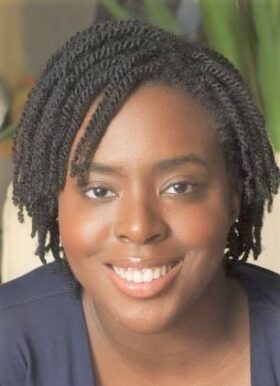
Awuri Asuru
Case Western Reserve University, MD, 2021
Case Western Reserve University, PhD, 2021
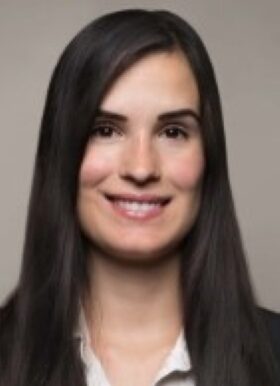
Michelle Bagwell
Washington University in St. Louis, MD, 2023
Washington University in St. Louis, MPH, 2023
I like to make my own candles from scratch. In medical school, my partner and I hiked the O and W circuit in Chile, Patagonia. I have an indoor garden of 30+ plants that I care for. Surprisingly, succulents and cacti do pretty well here in St. Louis! And…I got a dog this year, Bombon, and he’s a 60-pound boy who is half Great Pyrenees and his other half is mix of a bunch of other dog breeds.
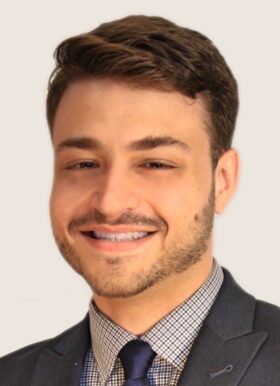
David Bender
Columbia University, MD, 2021
I enjoy the finer things in life: dry red wines, psychoanalytic conjecturing, pickleball, and Outback Steakhouse.
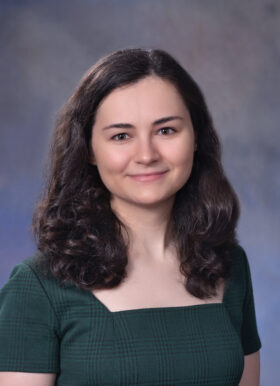
Kristen Brown
Baylor College of Medicine, MD, 2023
I visited 12 countries on 4 continents in the year before starting residency. I enjoy doing elaborate meal prep. In med school I fostered dachshunds!
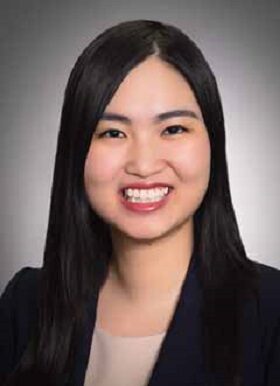
Thao Nguyen Bui
Creighton University, MD, 2022
Proud Hufflepuff. Vietnamese Midwesterner. Food-motivated. Tone deaf but love singing to self. Nap-loving hypomaniac.
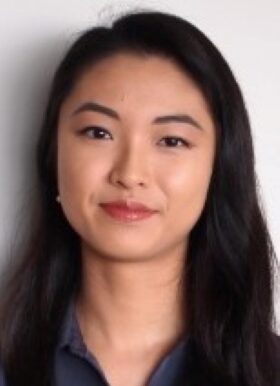
Michelle Cai
Washington University in St. Louis, MD, 2023
Musical fanatic, pet enthusiast, hobbyist seamstress and fashion devotee.
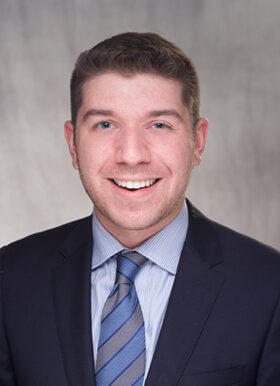
Jeffrey Carley
University of Iowa, MD, 2021
I love reality competition shows, Beyoncé, my 4-lb. yorkie named Louis, and traveling. My claim to fame is that I’ve visited all 50 U.S. states!
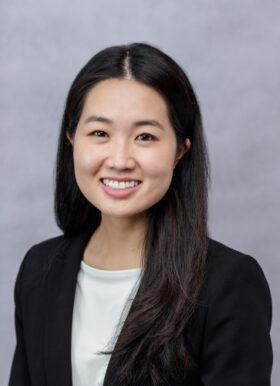
Tiffany Cheng
University of Illinois at Chicago, MD, 2021
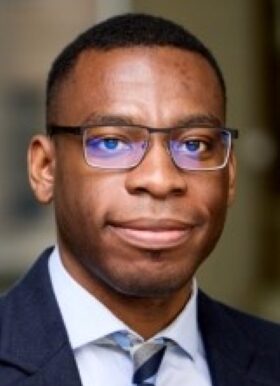
Stanley Chibueze
Washington University in St. Louis, MD, 2023
Washington University in St. Louis, Other, 2023
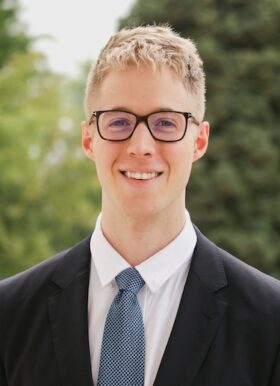
Brett Cutler
University of Utah, MD, 2022
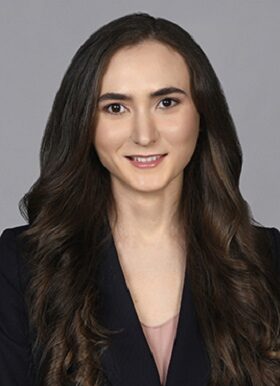
Lisa David
Florida International University, MD, 2022
Florida International University, Other, 2017
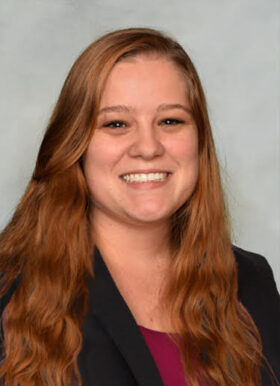
Tiana DiMasi
Louisiana State University, MD, 2022
Regis University, MS, 2017
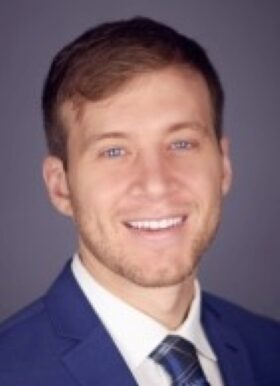
Christopher Douglas
Washington University in St. Louis, MD, 2023
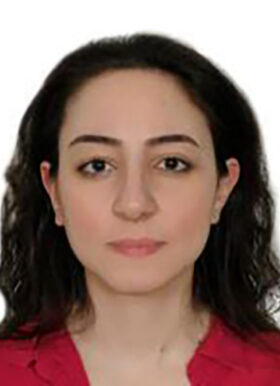
Chantale El Alam
University of Balamand, MD, 2019

Ronald Franz, II
University of Tennessee, MD, 2024
University of Tennessee, MS, 2020
I enjoy anything outdoors including scuba diving, backpacking, and biking. I spend the remaining spare time learning about linux systems.
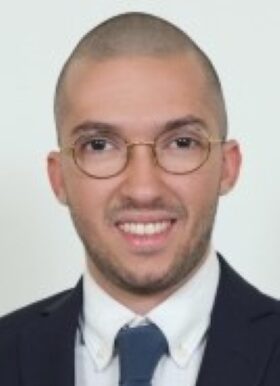
François Genadry
American University of Beirut, MD, 2021
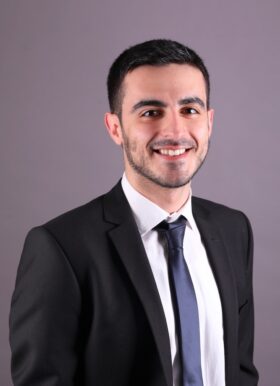
Ziad Ghantous
University of Balamand, MD, 2021
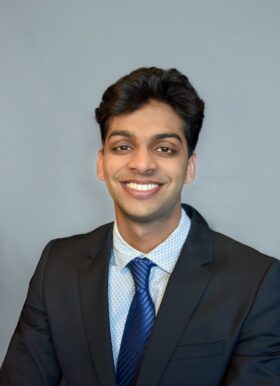
Rishi Gonuguntla
The University of Texas-San Antonio, MD, 2024
University of Texas-Houston, MPH, 2024
I turned my apartment into a warehouse to run a business refurbishing and reselling high-end office chairs.
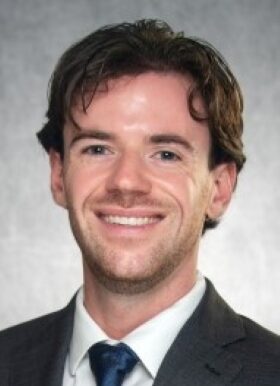
Ryan Havey
University of Iowa, MD, 2023
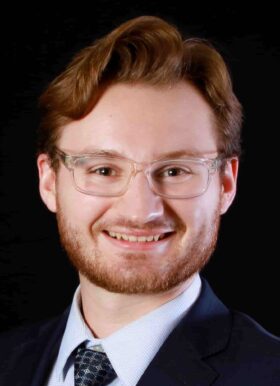
Joshua Hill
University of Missouri-Kansas City, MD, 2022
I have spent an absurdly large amount of time playing league of legends, but I am diamond.. so it was worth it, right? I have two puppies and a cat that make my home always exciting.
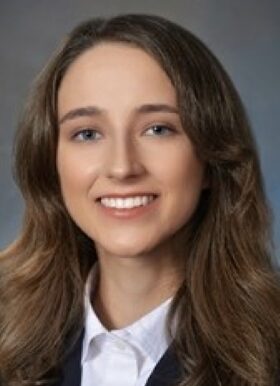
Olivia Hindera
Baylor College of Medicine, MD, 2023
University College London, Other, 2019
I was an Enterprise Crew Member in a Star Trek-themed musical during college.
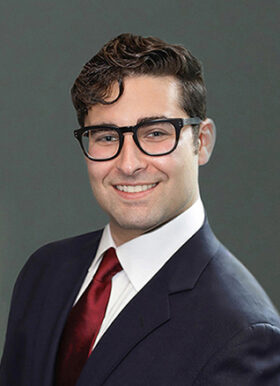
Vasilis Hristidis
Stony Brook University, MD, 2021
When I’m not watching soccer or Shark Week, I’m playing Taylor Swift songs on my guitar for my cat, Nova.
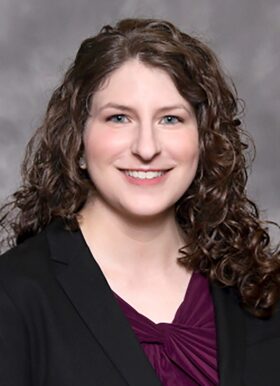
Alison Huckenpahler
Medical College of Wisconsin, MD, 2021
Medical College of Wisconsin, PhD, 2019
I’m a dog lover and competitive ballroom dancer who’s slowly working my way through the Great British Baking Show recipes.
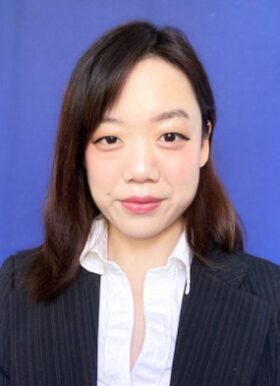
Lena Jia
Washington University in St. Louis, MD, 2022
Washington University in St. Louis, MPH, 2022
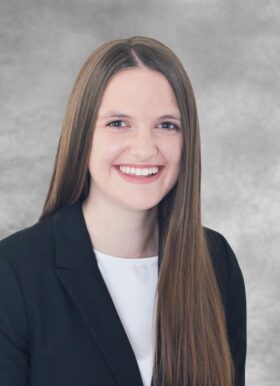
Sydney Johnson
St. Louis University, MD, 2024
I grew up renovating houses and currently live in a house my parents and I renovated together.
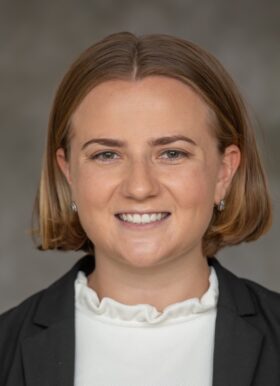
Sara Jones
University of Miami, MD, 2022
University of Miami, MPH, 2022
Proud female winner of the 2015 Run for America 5k Donut Challenge, a race involving running a 5k and eating 6 glazed donuts.
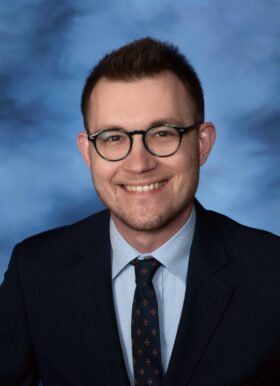
Brandon Kiley
Indiana University, MD, 2022
I’m a proud pet parent. When I’m not hanging out with my dog and three cats, you’ll most likely find me at a Cardinals game or punk rock show.
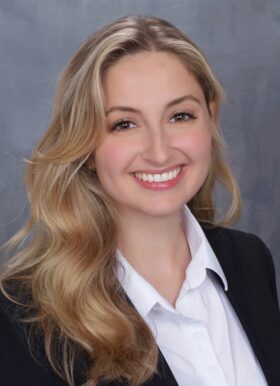
Hanna Kinzel
University of the Incarnate Word, DO, 2024
University of Rochester, MS, 2018
I collect cultural masks from different countries and when I was younger I successfully taught my cat to surf!
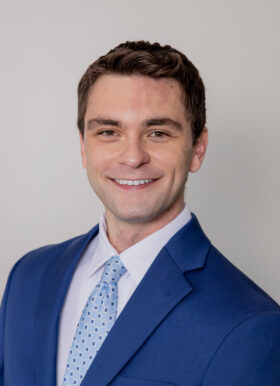
Nicholas Kohler
Case Western Reserve University, MD, 2022
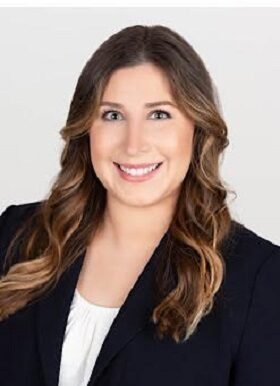
Catherine La Starza
Chicago College of Osteopathic Medicine of Midwest, DO, 2022
Just your basic girl who loves fall, pumpkins, iced coffee, and Taylor Swift. I’m also a new cat mom to two kittens!
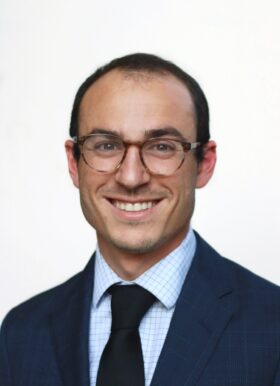
Lucas Lebovitz
University of Southern California, MD, 2021
I spent time performing and composing Big Band Jazz music.
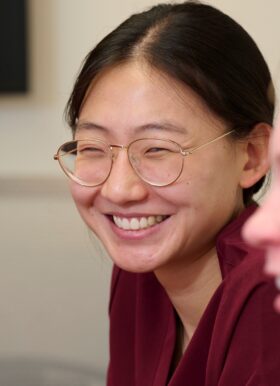
Miranda Liang
Washington University in St. Louis, MD, 2023
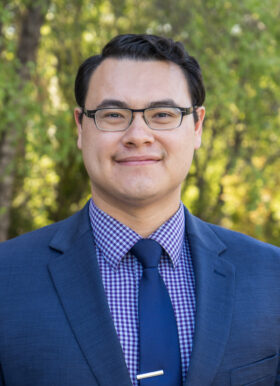
James Maher, Jr.
University of Oklahoma, MD, 2024
I have a Bonsai tree named Forest Gump.
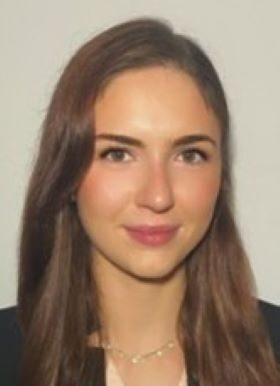
Sara Martin
Virginia Commonwealth University, MD, 2024
I have backpacked through the Alps, twice!
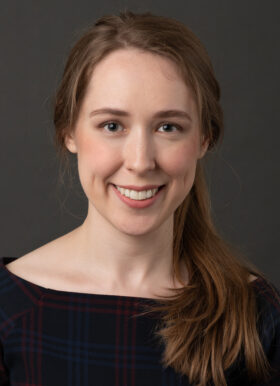
Meghan Murray
St. Louis University, MD, 2024
St. Louis University, PhD, 2022
I found my first kitten when I was four years old, and I’ve had a cat in my life ever since. My current feline companion is a Pixie Bob.
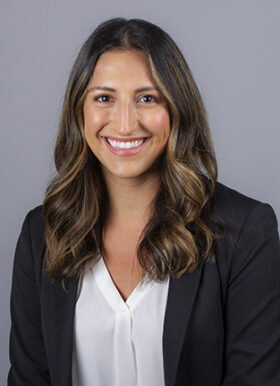
Madeline Newman
Chicago Medical School at Rosalind Franklin, MD, 2022
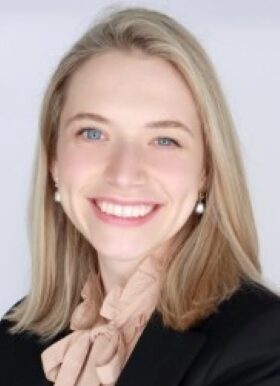
Annamarie Nocera
University of Cincinnati, MD, 2023
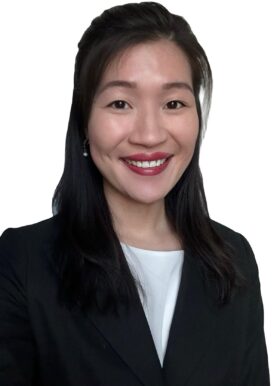
Emily Ong
Midwestern University, DO, 2024
I love to bake cookies and have gone undefeated in the cookie competition my medical school friends had every year.
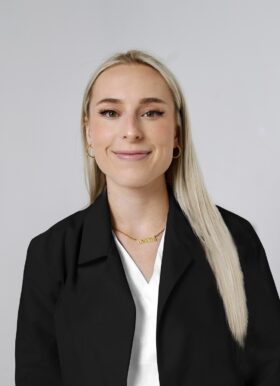
Julia Pakey
Boston University, MD, 2024
I’m a dual citizen of France and love to get down to dubstep.
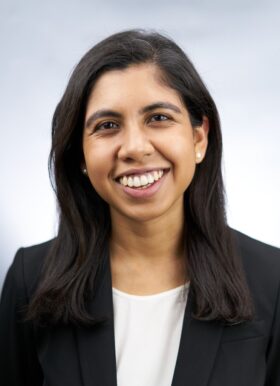
Reeti Pal
Washington University in St. Louis, MD, 2021
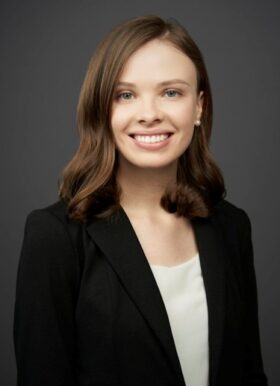
Grace Posey
Tulane University, MD, 2024
Tulane University, MS, 2019
I attended my first Mardi Gras ball last year and am excited for an upcoming hike in the Grand Canyon!
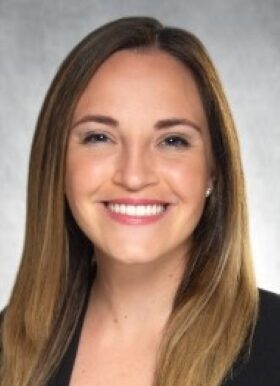
Sophia Rotman
University of Iowa, MD, 2023
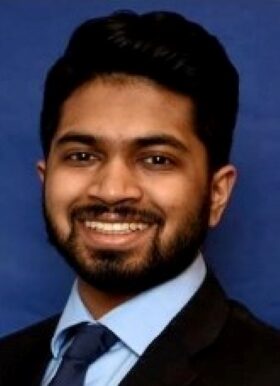
Suraj Shankar
University of Kansas, MD, 2023
University of Kansas, Other, 2023

Andrew Sivils
University of Missouri-Kansas City, MD, 2023
I have successfully launched, and subsequently failed, two startups.
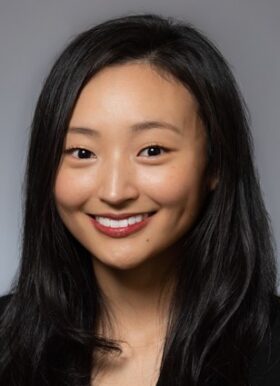
Tiffany Son
University of Texas Southwestern Medical School, MD, 2021
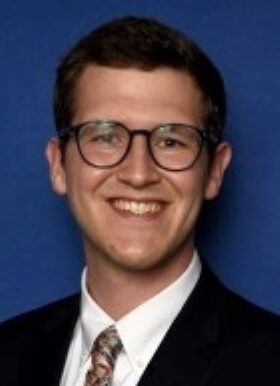
Jacob Steinle
University of Kansas, MD, 2023
Big basketball guy, huge fan of KU (rock chalk) and the Denver Nuggets. Stout defender of KC BBQ. Occasionally brew my own beer. Love taking walks in Forest Park and listening to podcasts on weekend mornings off.
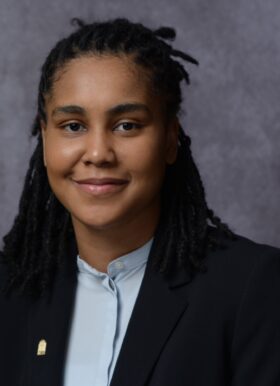
Zindzi Thompson
Meharry Medical College, MD, 2022
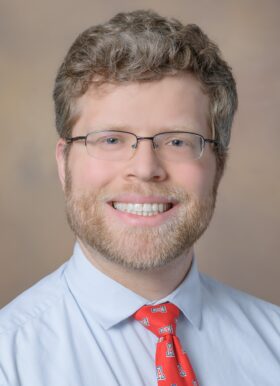
Andrew Tubbs
University of Arizona-Tucson, MD, 2024
University of Arizona, PhD, 2024
I am an identical twin but I’m three inches taller than he is.
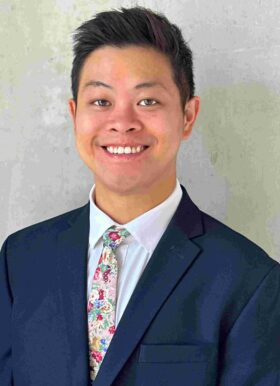
John Vo
Kansas City University, DO, 2024
Per my screen time report, I once spent 13 hours on TikTok in one day.

Phillip Vorster
University of Cincinnati, MD, 2024
South African dual citizen! I love rugby, writing, gaming, and the occasional braai.
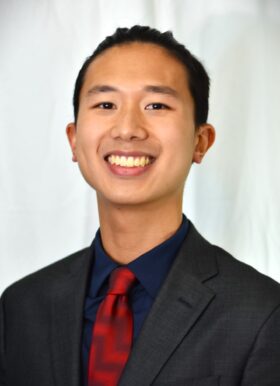
Ray Wang
University of Texas-San Antonio, MD, 2024
I am an avid hiker, concert-goer, and I love card and board games of all kinds, both physical and digital. I reached legend rank in hearthstone, just once though.
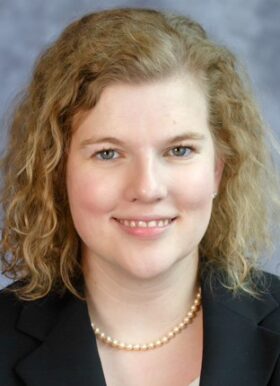
Jessica Williams
University of Florida, MD, 2021
I’m more tone deaf than I am deaf! Thanks to my cochlear implant, though, you’ll still catch me belting every line in Mamma Mia 2: Here We Go Again, Taylor Swift’s repertoire, and Billy Joel’s We Didn’t Start the Fire.
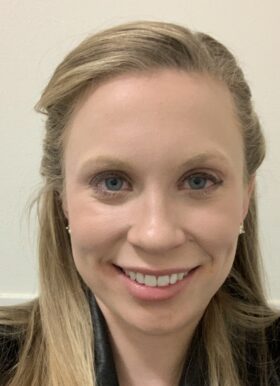
Kathryn Wrobel
Rush Medical College of Rush University, MD, 2022
I was a distance swimmer in college and have a school record in the 1,650 yard freestyle.

Lucy Yao
Chicago Medical School at Rosalind Franklin, MD, 2023